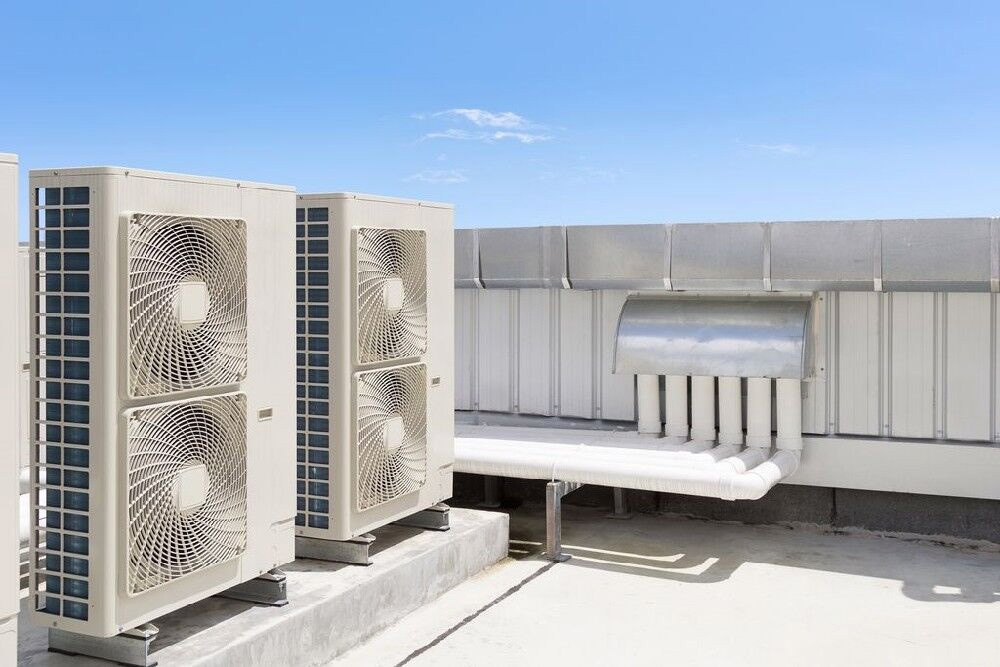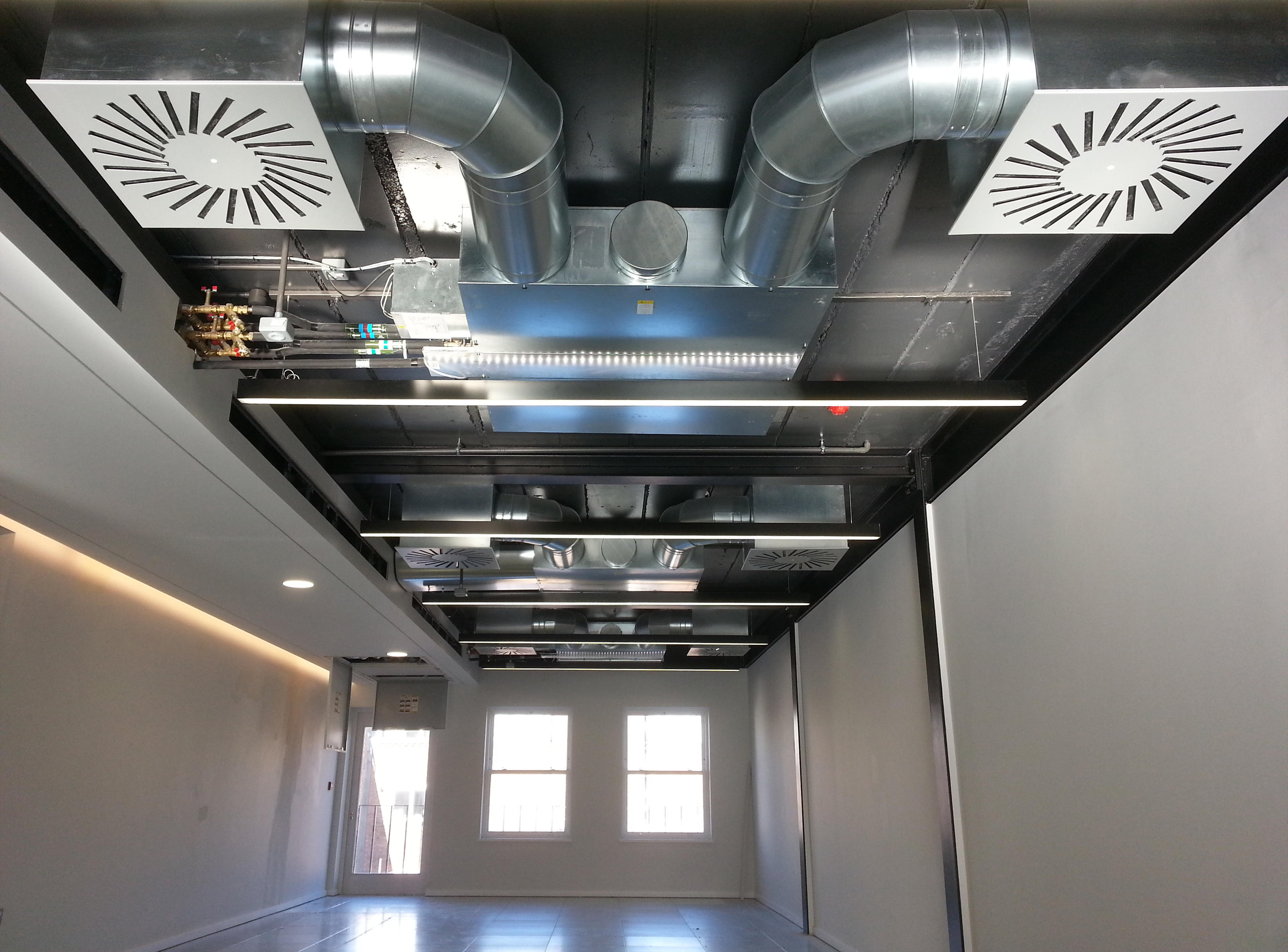Rising energy prices: why it matters: saving electricity through energy-efficient ventilation: increasing the energy efficiency of the system
Each year, the cost of electricity is increasing, which makes the issue of energy saving particularly relevant for enterprises and private users. Industrial and residential premises consume significant amounts of electricity, with a large part of it being ventilation systems. Inefficient ventilation leads to unnecessary costs, because old or incorrectly installed ventilation systems use more energy than necessary.
Energy saving in modern ventilation systems is one of the most important aspects that helps to significantly reduce heating and electricity costs. The use of modern ventilation systems equipped with heat exchangers and supply air heating allows you to reduce energy consumption without losing indoor air quality. Integration of such systems with air quality sensors and automated controllers allows you to adjust the ventilation mode according to current needs, which significantly increases efficiency and a comfortable microclimate.
Features of energy-efficient ventilation to reduce energy consumption and save electricity
An automatically configured supply and exhaust ventilation system optimizes the amount of fresh air entering and removes polluted air, maintaining the optimal level of humidity and temperature.
The advantages and disadvantages of different types of ventilation systems should be taken into account when choosing equipment for a specific room. Supply and exhaust ventilation, equipped with the latest technologies, allows not only to supply fresh air, but also to effectively remove polluted air, which significantly affects air quality.
The fan in such a system consumes less electricity due to the automation of the system, which significantly reduces electricity consumption and overall heating costs. In addition, modern ventilation can operate in different modes, which allows you to adapt to changes in temperature and humidity, ensuring an optimal microclimate in the room.
Equipment with recuperators is widely used in both domestic and industrial ventilation. These systems will help reduce energy consumption by preserving heat during the removal of polluted air and simultaneously supplying fresh air using efficient fans.
Mechanical exhaust ventilation: how to improve air quality and save electricity

Mechanical exhaust ventilation with fresh air heating contributes not only to savings, but also to maintaining a comfortable level of humidity and temperature in the rooms. This is especially important during cold periods of the year, when heating costs can increase significantly.
Integrating modern air quality sensors into ventilation systems allows you to monitor and automatically adjust the level of fresh air supply and removal of polluted air from the premises.
This approach ensures efficient operation of the ventilation system and helps to avoid unnecessary energy consumption, reducing electricity consumption. Automation of the fan and the system as a whole will help maintain optimal operation and reduce heating and ventilation costs.
Ventilation with recuperators — is an innovative solution that combines energy saving, improved air quality and comfortable conditions in the premises. By transferring heat from the exhaust air to the supply air, the system allows not only to reduce energy consumption, but also to increase the efficiency of the ventilation system as a whole.
Energy-efficient ventilation and energy efficiency: basic principles of saving electricity and improving air quality
This is an important step towards energy efficiency, which will help to significantly reduce heating and air conditioning costs, which is relevant for any home or industrial premises.
In general, the selection and proper design of a ventilation system, taking into account the use of recuperators and air quality sensors, will help to ensure optimal ventilation operation and save on electricity and heating costs. The use of the latest technologies allows you to maintain fresh air in the room, while simultaneously reducing energy consumption and improving the overall efficiency of the ventilation system. This is an ideal option for those who seek comfort and savings in one solution.
How energy-efficient ventilation works: features of the fresh air supply system and improving indoor air quality
Energy-efficient ventilation is based on the principles of optimal energy use to ensure high-quality air exchange in rooms. The main element of such systems are recuperators - devices that recover heat from exhaust air, which allows you to significantly reduce heating and cooling costs.
Ventilator.ua offers a wide range of ventilation systems with built-in recuperators that are adapted to veni under different conditions and sizes of premises. In addition to heat recovery, an important component of energy-efficient ventilation is control automation, which allows systems to operate with maximum efficiency.
The main advantages of modern ventilation from Ventilator.ua:
- Built-in heat recovery units for heat preservation
- Automatic regulation of fan operation
- Humidity and air quality control
The fans used in such systems are equipped with modern engines with low energy consumption, which significantly reduces energy costs. Thanks to the automation of ventilation systems, it is possible to avoid unnecessary costs, because the system itself regulates the intensity of work depending on the level of humidity, temperature and concentration of pollutants in the air.
This is especially important for large industrial or commercial premises, where the level of pollution can change at different times of the day. Ventilation systems equipped with sensors are able to adapt the operating mode and maintain comfortable conditions, which has a positive effect on both the health of employees and the safety of products.
Recuperators and automation in mechanical exhaust ventilation: advantages, disadvantages and optimization of electricity consumption, costs, efficiency
Recuperators are a key component of energy-efficient ventilation systems. They provide heat recovery from exhaust air, which significantly reduces energy losses for heating fresh supply air.
The automation of ventilation systems, which is implemented by Ventilator.ua, includes the use of modern controllers and sensors that provide adaptive ventilation control depending on changes in air parameters in the room. This saves electricity by minimizing the time the fans run at maximum speed and reducing the load on the heating or air conditioning system.
Modern ventilation systems actively use heat recovery, which allows you to significantly reduce the cost of heating the premises. Heating the supply air with heat extracted from the exhaust air helps to maintain the optimal temperature without unnecessary energy consumption. This is especially important during the cold periods of the year, when ventilation can be a source of significant heat loss.
Integrating mechanical exhaust ventilation systems to reduce heating costs and increase the efficiency of the air system using a fan

The efficiency of the ventilation system in such conditions directly affects energy savings and overall savings on the maintenance of the premises. Companies using these technologies can significantly reduce heating and air conditioning costs, which is an important advantage in today's realities of rising tariffs.
The use of modern ventilation systems with heat recovery units significantly improves the energy efficiency of premises and helps reduce overall heating and air conditioning costs. The heat recovery unit uses mechanical exhaust ventilation to transfer heat from the exhaust air to the supply air, which allows you to reduce energy costs for heating fresh air.
This not only reduces ventilation costs, but also improves indoor air quality, ensuring effective air purification from dust and other contaminants. A ventilation system equipped with air quality sensors automatically regulates the fan operation, which helps optimize the supply of fresh air and the removal of polluted air, maintaining comfortable conditions in your home or industrial premises.
Fan: tips for optimizing electricity costs and energy consumption in ventilation systems for domestic and industrial ventilation, mechanical exhaust ventilation
To effectively reduce electricity consumption through ventilation, it is important not only to install modern equipment, but also to operate it correctly. Ventilator.ua recommends regular maintenance of ventilation systems, which includes cleaning filters, checking the operation of fans and recuperators.
Following simple operating rules allows you to maintain maximum ventilation performance and energy efficiency, reducing electricity costs. Contact Ventilator.ua and the online ventilation store Ventilator for consultations and service to ensure your system works as efficiently as possible.
Recommendations from Ventilator.ua for optimizing ventilation:
- Choose ventilation systems with automatic power control
- Use systems with heat recovery
- Optimize the ventilation schedule according to the real needs of the room
- Conduct regular energy consumption audits and technical inspections of the system
The peculiarities of modern ventilation systems lie in their ability to integrate with automated building management systems. Thanks to this, ventilation becomes not just a set of mechanical devices, but an integral part of the overall comfort system and energy saving.
Fans and their role in providing fresh air: advantages and disadvantages of ventilation using modern systems
Automation allows you to regulate the operation of fans and other system components, depending on the real needs of the room and weather conditions outside. This approach avoids excessive operation of equipment during periods of low ventilation demand, which significantly reduces energy consumption.
Regulating the level of humidity and temperature in rooms using modern ventilation systems helps maintain an optimal microclimate, which increases the comfort and productivity of workers. A ventilation system equipped with air quality sensors not only provides fresh air, but also automatically removes polluted air, maintaining healthy conditions.
This is especially important for production premises with high levels of dust or harmful substances. Using such systems will help avoid health problems and reduce treatment costs and production downtime.
Comparison of costs before and after: efficiency of systems with mechanical exhaust ventilation and supply of fresh air using a fan
The implementation of modern energy-efficient ventilation systems from Ventilator.ua allows you to significantly reduce electricity consumption. In many cases, electricity costs are reduced by 30-50%, which is a significant saving for businesses and private users.
Thanks to proper design, installation and configuration of the equipment, ventilation begins to work with maximum efficiency, maintaining an optimal microclimate and reducing energy consumption. Ventilator.ua clients often note improved air quality and comfort in rooms after ventilation modernization.
Energy efficiency and indoor air quality by systems: optimization of ventilation systems to minimize energy costs, fresh air
Thus, the use of modern ventilation systems with automation, heat recovery and air quality sensors will help significantly reduce energy costs and maintain a comfortable level of temperature and humidity in rooms. Ventilation, equipped with modern fans and supply air heating systems, ensures efficient operation and resource savings.
Integrating such systems with other building systems allows you to regulate the operating mode and optimize energy consumption, which is a key factor for any enterprise or organization that seeks to reduce its costs and increase efficiency.
By choosing Ventilator.ua and the Ventilator online ventilation store, you receive not only high-quality equipment, but also professional support at all stages: from design to installation and service. Call +38 (044) 238-24-81 for detailed advice and selection of the optimal solution for your premises.



















Write a comment